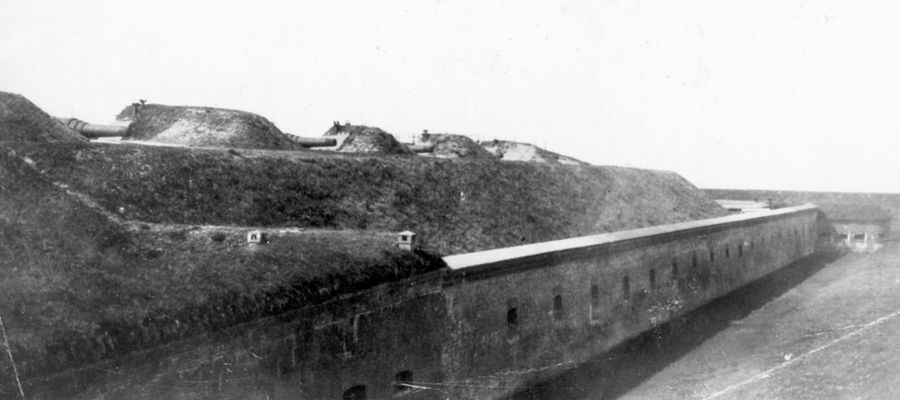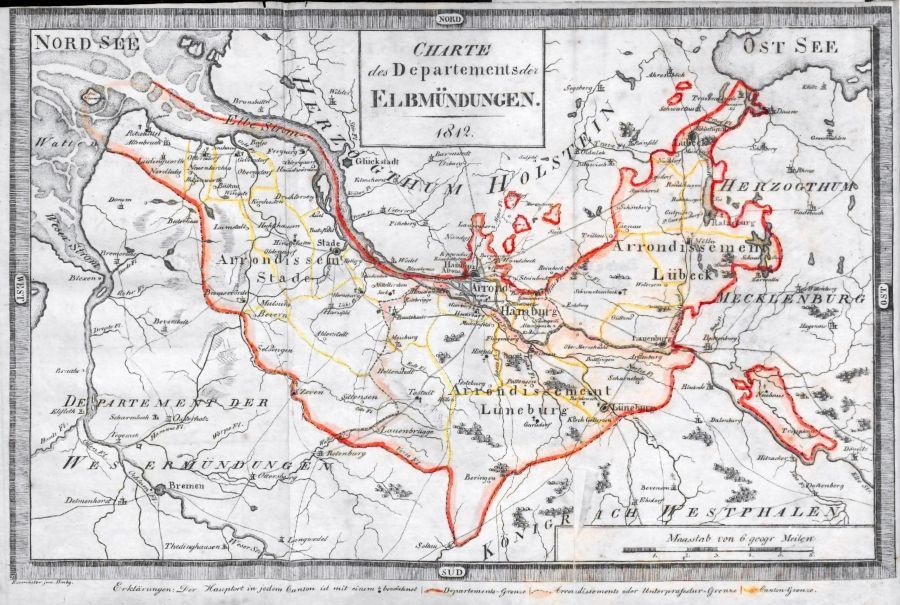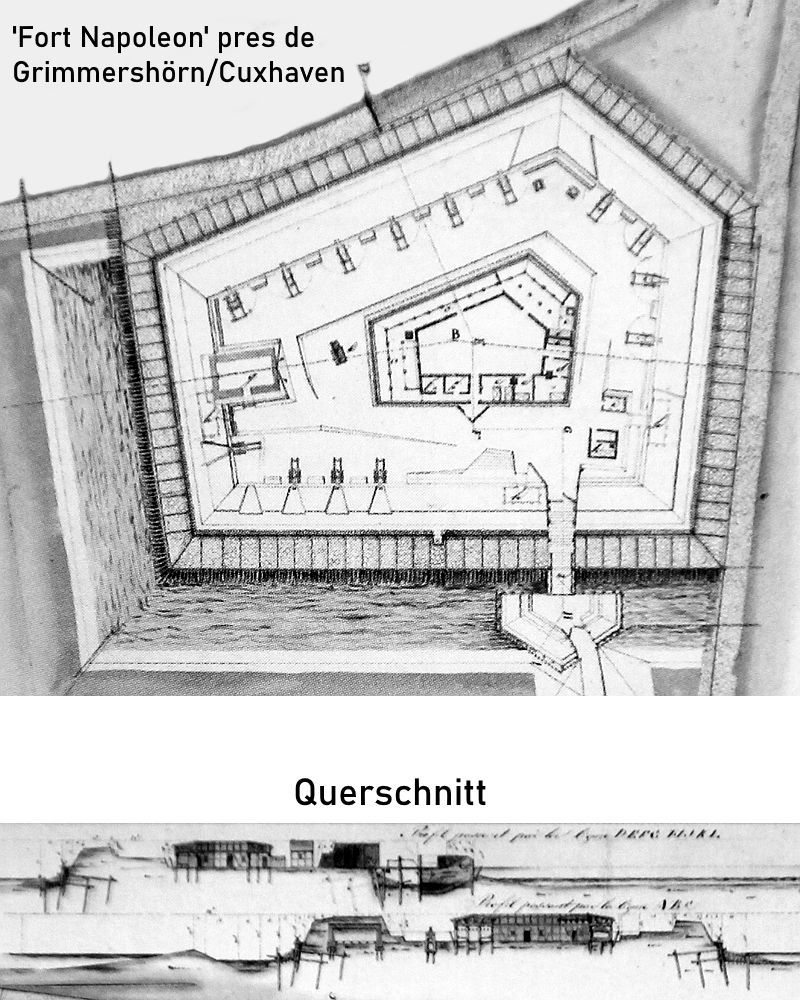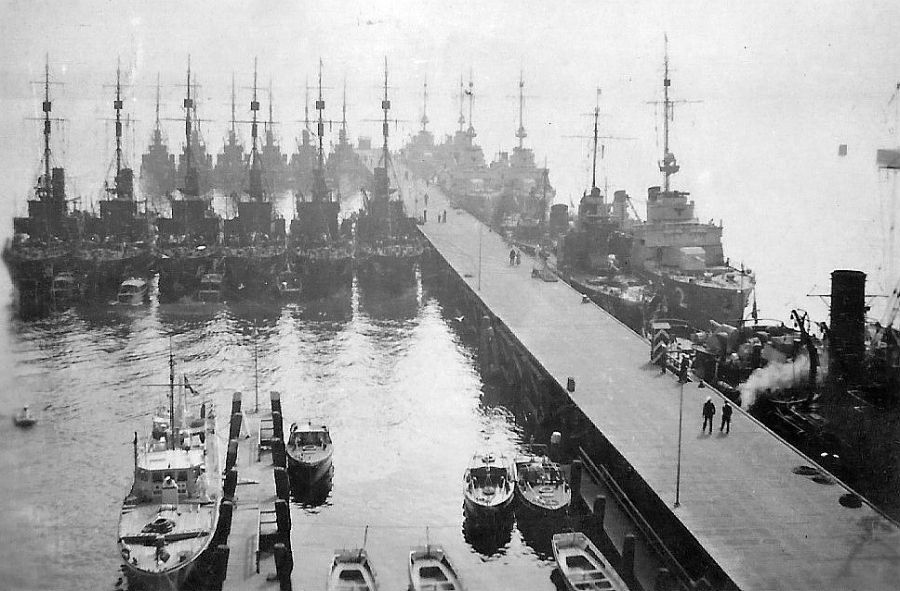A few years later, in 1904, Cuxhaven became the seat of the entire inspection of coastal artillery and mining. With the stationing of the first German mine company and the commissioning of the first six torpedo boats, the first naval units arrived in Cuxhaven.

Das Cuxhaven bereits im Jahre 1907 die Stadtrechte erhielt, war auch dem Status der Marinegarnisonsstadt geschuldet. Zudem stand ein großer Teil der damaligen Bevölkerung unmittelbar mit dem Stützpunkt in Lohn und Brot. Entweder als direkter Militärangehöriger, Dienstleister, Zulieferer oder Arbeiter.
Even when Napoleon's troops occupied the areas of northern Germany, the strategic importance of the peninsula between the rivers Weser and Elbe was already apparent. At that time, around 1810, the island of Heligoland belonged to England and was occupied by a strong military garrison, meaning the enemy was not too far away. In the meantime, the island of Neuwerk had also been infiltrated by agents and the inhabitants were on the English side. This happened to the great displeasure of the French, who then demolished all the buildings except the tower. All the inhabitants and their livestock were expelled from the island. The French military immediately built fortifications between the Kugelbake and the Cuxhaven harbor to protect the coast on Napoleon's direct orders. This project was intended to prevent English ships from advancing into the Elbe and further inland. This is how "Fort Napoleon" was built at Grimmershörn Bay and "Fort du Phare" at the Cuxhaven lighthouse.
Nach dem Ende der Franzosenzeit kam die nächste Gefahr aus dem Norden. Vom 1. Februar 1864 bis zum 30. Oktober 1864 tobte der Krieg zwischen Preußen und Dänemark um die Herzogtümer Schleswig und Holstein. Hierbei kam es am 09. Mai 1864 auch zum berühmten Seegefecht zwischen der dänischen und der preußisch-österreichischen Flotte vor Helgoland, wobei keine der beteiligten Parteien allerdings einen wirklichen Sieg für sich beanspruchen konnte.
Nach diesem Konflikt kam anschließend eine Zeit der Ruhe, in dem einige Jahre Frieden einkehrte. Doch das Risiko eines Durchbruchs oder sogar einer Invasion durch zukünftige Gegner von See aus, blieb weiterhin bestehen.
1868 führte das noch unter preußischer Leitung geführte Marinebauamt dann erste Planungen für die Errichtung mehrerer Fortifikationen an der Cuxhavener Elbmündung durch. Bereits 1869 wurden erste Inspektionen möglicher Standorte vor Ort durchgeführt und schon nach kurzer Prüfung begannen noch im selben Jahr die Bauarbeiten.
Nach Abschluß des deutsch-französischen Krieges (1870-1871) wurden die Ausbaumaßnahmen der Sicherung der Elbmündung noch einmal überarbeitet und der militärischen Lage angepasst.
Mit der Zeit entstanden das Fort Kugelbake, Fort Grimmershörn, Grodener Schanze, Fort Thomsen, Kanonenbatterie Döse und noch weitere schwer bewaffnete Geschützbatterien. Der Küstenstreifen zwischen Sahlenburg und Groden war in dieser Zeit gegen Angriffe von See aus militärisch sehr stark befestigt und „bis an die Zähne“ bewaffnet worden.

Fort Kugelbake 1905
What: MB

Fort Kugelbake during practice shooting
In 1888, the Imperial Admiralty took over command of all fortifications along the Lower Elbe. In April 1890, the decision was made to send half a sailor artillery detachment from Lehe to Cuxhaven to take over the military facilities, the guns and the security of the port facilities. The Prussian guards in the corresponding swearing-in facilities had already been replaced. In 1892, the Reichstag decided to establish the Cuxhaven garrison, and on January 4, 1893, the 1st Company of the IVth Sailor Artillery Detachment (MAA) moved in. However, its soldiers were initially housed in civilian quarters, as there were no barracks yet. The 2nd Company followed in November 1893, making it possible to accommodate them in the "Seedeichkaserne" (sea dike barracks), which had been completed in the same year. In 1895, the Marine Music Corps of the IV. MMA finally came to Cuxhaven.
Sources: Peter Bussler, City Archives, Hermann Bormann, Gerd Wildfang, MB Federal Archives






